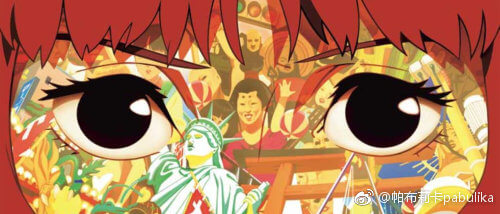草书
Cursive Script
汉字发展演变中的一种书体。按发展历程可分为草隶、章草、今草、狂草等阶段。它始于汉代,主要是为了书写便捷,提高效率,当时通行的是草隶,后书家损益笔法,逐渐发展为章草。
Cursive script, also known as running hand, is a particular style of Chinese calligraphy. It went through four stages of development: cursive clerical, semi-cursive, regular cursive and wild cursive. It began in the Han Dynasty, aiming to facilitate handwriting and increase efficiency. The first popular form of cursive script was cursive clerical. Later, calligraphers added or subtracted the number of strokes to turn the cursive clerical into semi-cursive.
🎈在翻译「草书」一词时,译文首先给出其专有名词cursive script,再给出其较为通俗的说法running hand,同时也是对草书进行初步的解释,便于理解。
🎈在翻译原文第二句时,由于原文由多个短句所组成,如果按此结构译为英文,则会显得句子冗长且不符合英文的行文习惯。因此,译文根据原文的句子意群,对原文进行拆分重组,分别改为了“始于汉代”,“草隶”和“章草”三句。
🎈在翻译「始于汉代,主要是为了书写便捷,提高效率」一句时,译文将后半句译为了一个目的状语,表明草隶形成的目的,即为了书写方便和提高效率(facilitate handwriting and increase efficiency)
🎈「损益笔法」是文言文表达,因此在翻译时要先翻译为白话文,其含义是「增添和删减笔划」,故而翻译为added or subtracted the number of strokes
传至汉末,相传张芝摆脱了章草中所保留的隶书形迹,上下字之间的笔势牵连相通,并省减偏旁、相互假借,形成为今草(即今天俗称的草书)
Toward the end of the Han Dynasty, Zhang Zhi allegedly rid semi-cursive script of cursive clerical vestiges, linking the final strokes of the character above with the beginning stroke of the following character, eliminating certain radicals and borrowing strokes from neighboring parts to form regular cursive script(commonly known as “cursive hand” today).
🎈「传至汉末」一句文言文色彩较为浓厚,因此在翻译时需要先对句子原文进行理解。此句为「到了汉代末期的时候」,故翻译为toward the end of the Han Dynasty
🎈本句原文多为四字短语,用字简洁,所以在翻译时应充分照顾英文语法和行文习惯,补全信息。「上下字之间的笔势牵连相通」意为「最开始的笔划与最末尾的笔划相连接」,故而译为link,表示连接之意;「省减偏旁」意为「删减偏旁」,故用动词eliminate;而「相互假借」意为字与字之间互相借用或共用笔划,所以译为borrowing strokes from neighboring parts
发展到唐代,张旭、怀素等草书大家相继产生,他们抒发性情、解放怀抱,将草书写得更为自由纵放,笔势绵延环绕,章法跌宕起伏,结字大胆奇诡,形态变化多端,成为“狂草”。后人又称狂草为“大草”,称今草为“小草”。
During the Tang Dynasty, Zhang Xu and Huai Su, regarded as master calligraphers of the cursive style, gave full expression of their feelings and thoughts, and wrote their characters in a freer and more uninhibited manner. Their execution of strokes featured continuous stretches, gracefully circular movement, flowing contours, amazingly bold combinations of characters and a wide variety of patterns, leading to the emergence of“wild” cursive script. People of later generations also called the latter “great cursive”, as opposed to“small cursive”,which in fact referred to regular cursive.
🎈「大家」即「大师」之意,故译为master。
🎈「抒发性情」与「解放怀抱」具有着相同的意思,都是「心灵思想上无拘无束」之意,故而译为gave full expression of their feelings and thoughts,表示自由自在的表达自己的思想看法。
🎈在翻译「自由纵放」时,译文增译出了原文中所暗含的比较级,因为唐代草书书法家比之前人,更加无拘无束下笔洒脱,故而译文译为了freer and more uninhibited manner
🎈本句由多个短句构成,多为四六句,因此在翻译时应进行深层信息挖掘,补全句子结构,充分考虑英文的语法和行文习惯。本句以无灵主语execution of strokes为主语,动词feature表示具有…特征,后面跟多个「形容词+名词」结构的草书特点,最后跟一个结果状语从句,表示这一系列特点最终构成了「狂草」,使得整个句子贴合英文的行文习惯。
🎈在翻译「后人又称狂草为“大草”,称今草为“小草”」一句时,译文采用了as opposed to,表达出了原文中所暗含的两者之间相互区别对立的意思。
🎈重点表达
草书 Cursive Script
草隶 cursive clerical
章草 semi-cursive
今草 regular cursive
狂草 wild cursive
提高效率 increase efficiency
损益笔法 add or subtract the number of strokes
据称 allegedly
抒发性情 give full expression of feelings and thoughts
轮廓 contour
大草 great cursive
小草 small cursive
未经允许不得转载:帕布莉卡 » 《中国传统文化关键字》草书 -英语翻译教程-中英双语赏析
 帕布莉卡
帕布莉卡


 爱是一颗心遇到另一颗心(出处+配图)
爱是一颗心遇到另一颗心(出处+配图) 

